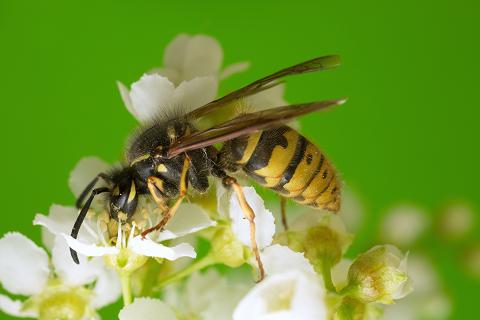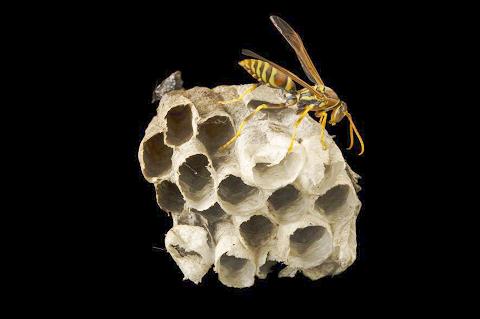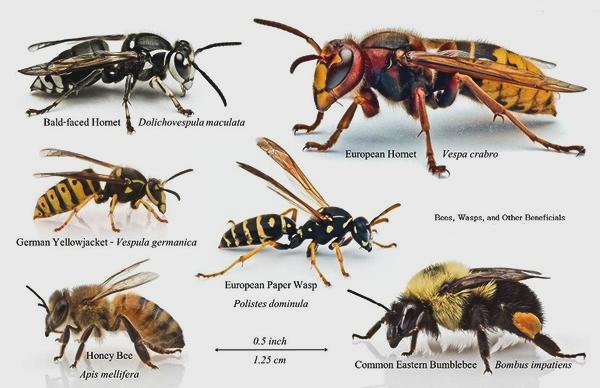 |
Canku Ota
|
 |
|
(Many Paths)
|
||
|
An Online Newsletter
Celebrating Native America
|
||
|
January 2018 - Volume
16 Number 1
|
||
|
|
||
|
ABOUT WASPS
|
||
|
by National Geographic
|
||
Wasps make up an enormously diverse array of insects, with some 30,000 identified species. We are most familiar with those that are wrapped in bright warning colors—ones that buzz angrily about in groups and threaten us with painful stings. But most wasps are actually solitary, non-stinging varieties. And all do far more good for humans by controlling pest insect populations than harm. Differences From Bees They come in every color imaginable, from the familiar yellow to brown, metallic blue, and bright red. Generally, the brighter colored species are in the Vespidae, or stinging wasp, family. All wasps build nests. Whereas bees secrete a waxy substance to construct their nests, wasps create their familiar papery abodes from wood fibers scraped with their hard mandibles and chewed into a pulp.
Social vs. Solitary Wasps Wasps are divided into two primary subgroups: social and solitary. Social wasps account for only about a thousand species and include formidable colony-builders, like yellow jackets and hornets. Social wasp colonies are started from scratch each spring by a queen who was fertilized the previous year and survived the winter by hibernating in a warm place. When she emerges, she builds a small nest and rears a starter brood of worker females. These workers then take over expanding the nest, building multiple six-sided cells into which the queen continually lays eggs. By late summer, a colony can have more than 5,000 individuals, all of whom, including the founding queen, die off at winter. Only newly fertilized queens survive the cold to restart the process in spring. Solitary wasps, by far the largest subgroup, do not form colonies. This group includes some of the wasp family's largest members, like cicada killers and the striking blue-and-orange tarantula hawks, which can both reach 1.5 inches in length. Whereas social wasps use their stingers only for defense, stinging solitary wasps rely on their venom to hunt. Stingers Impact on the Ecosystem
|
|||
|
|
||
|
|
||
| Canku Ota is a free Newsletter celebrating Native America, its traditions and accomplishments . We do not provide subscriber or visitor names to anyone. Some articles presented in Canku Ota may contain copyright material. We have received appropriate permissions for republishing any articles. Material appearing here is distributed without profit or monetary gain to those who have expressed an interest. This is in accordance with Title 17 U.S.C. Section 107. | ||
|
Canku Ota is a copyright ©
2000 - 2018 of Vicki Williams Barry and Paul Barry.
|
||
 |
 |
|
|
The "Canku
Ota - A Newsletter Celebrating Native America" web site and
its design is the
|
||
|
Copyright ©
1999 - 2018 of Paul C. Barry.
|
||
|
All Rights Reserved.
|
||


